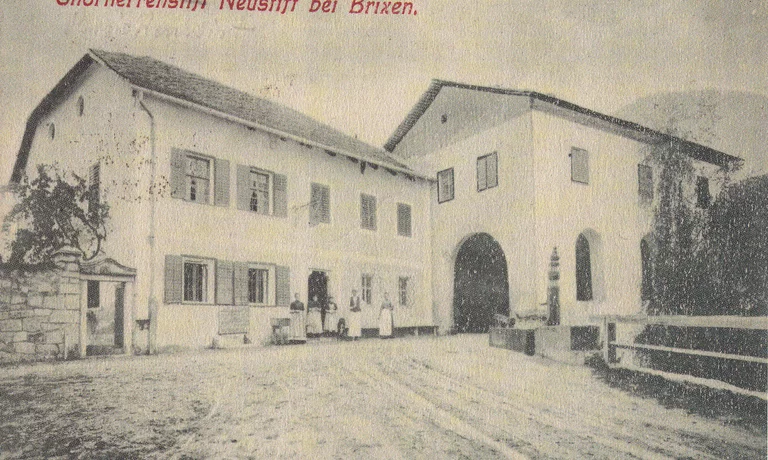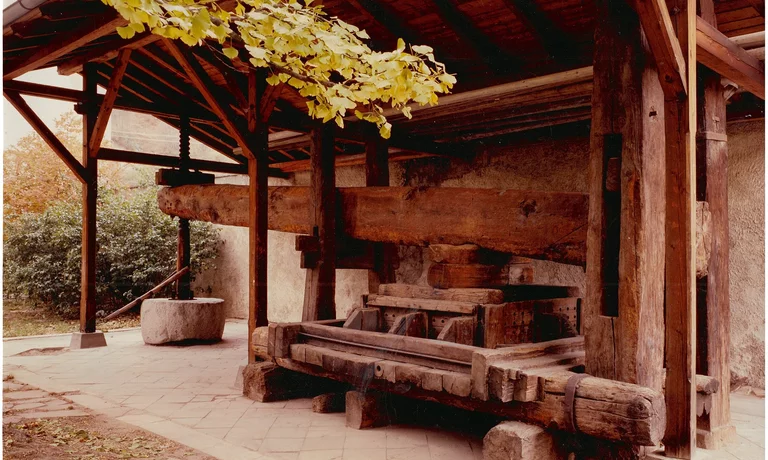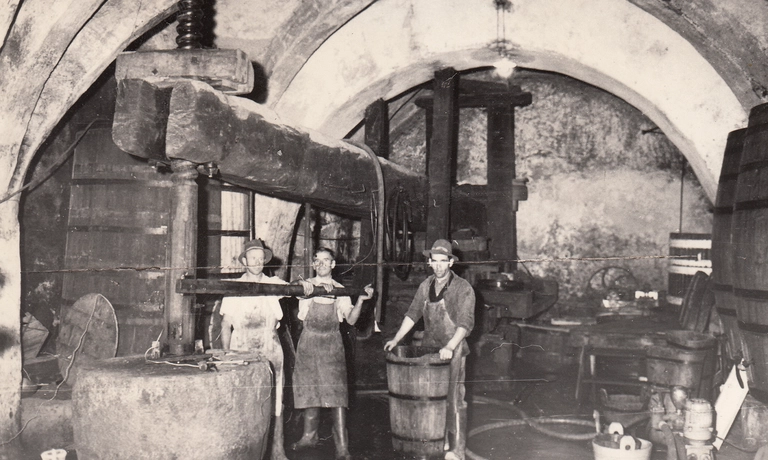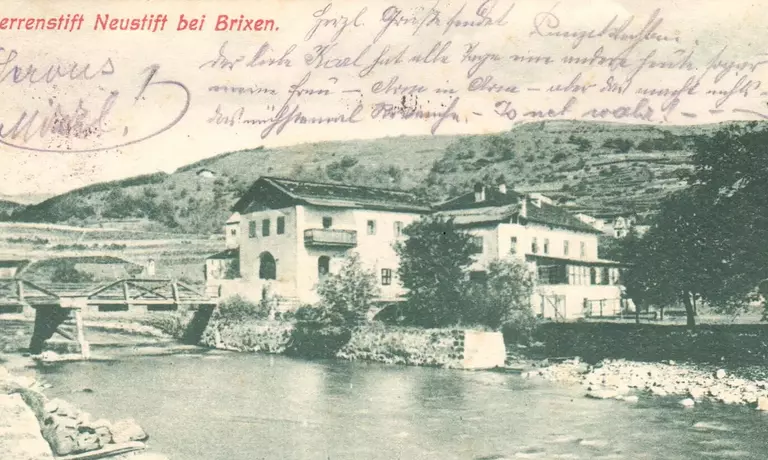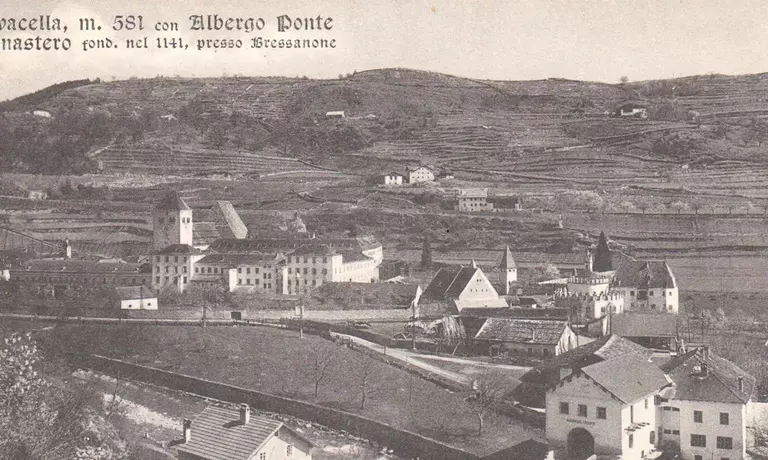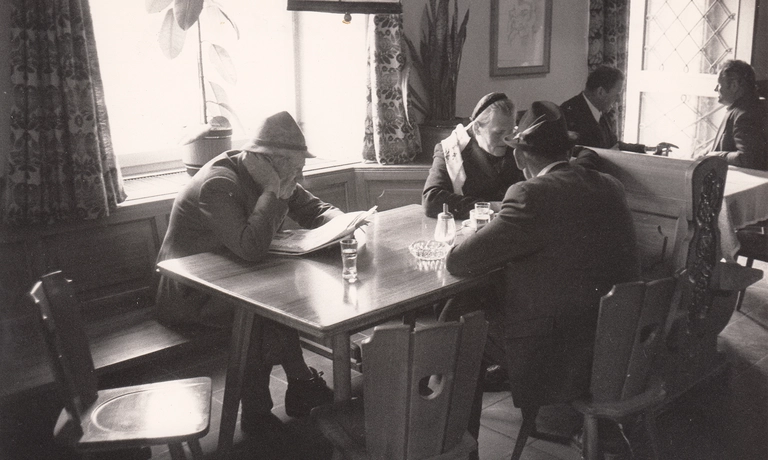“Before we return to Brixen we have to stop at the Brückenwirt a while, for that has forever been a part of each trip to Neustift. Only then may we travel on through the old gate and back toward the episcopal city”, writes Josef Weingartner in his “Wanderbilder Durch Tirol” (Travel Impressions in Tyrol, 1911).
A short history of the building summarised by Josef Zanol (1941 – 2012), next to a mural by Hubert Zanol depicting the history of the Hotel Brückenwirt, situated along the stairwell up to the first floor.
The history of the Hotel Brückenwirt is closely linked to that of the Augustinian monastery Neustift. It begins in 1507 when Christoph Niedermayr, provost of the monastery at the time, ordered an arched bridge of hewn stone to be built across the river Eisack. In 1520 both bridge and an adjoining building were swept away by floods, but were soon rebuilt.
The current shape of the building dates back to 1687, when provost Fortunat Troyer ordered the construction of an inn. Around the year of 1783 a small sensation took place at the inn: the surgeon Franz Liebl operated on a waitress named Zenzl. It was the first major operation on Tyrolian soil. In 1797 parts of the bridge and the tower were destroyed again, this time by a fire, but were, as before, quickly reconstructed.
The stables which used to be a part of the Brückenwirt were heavily damaged in a bomb raid in 1945 and demolished soon after.
After perfecting his trade in cities such as Meran, Bozen and Koblenz, chef Josef Zanol became leaseholder of the inn in 1968. Five years later he bought the Brückenwirt from the monastery and ran it with great devotion until his death in 2012. He knew how to lovingly renovate and adapt the building in line with the requirements of modern tourism while always remembering and safeguarding its long and marvellous history.


The covered bridge which gave the inn its name is a testament to the old art of timber-frame construction and one of Neustift’s architectural monuments.
The first bridge across the river Eisack was built in 1507 from stone. A gate house was erected next to it and thus began the story of the Brückenwirt.
In 1636 the pest raged in and around Neustift and the wooden bridge with the gabled roof became a barrier, guarded by two men who only allowed those through that could produce a certificate which proved their good health.
In later years the bridge functioned instead as a gateway to Neustift. Up until the year 2010 the 3.3-metre-wide bridge was the main access road to the monastery coming from Brixen. Countless numbers of cars as well as busses and lorries crossed the bridge daily for decades.
These days a simple concrete girder bridge a little further from the house provides a crossing for traffic, while the old wooden bridge is now only open to pedestrians. Yet for the Brückenwirt it will always remain more than just a way across the river Eisack.

